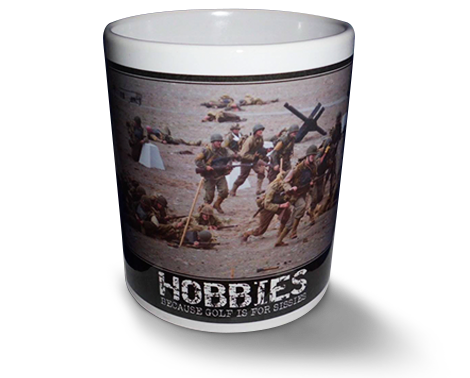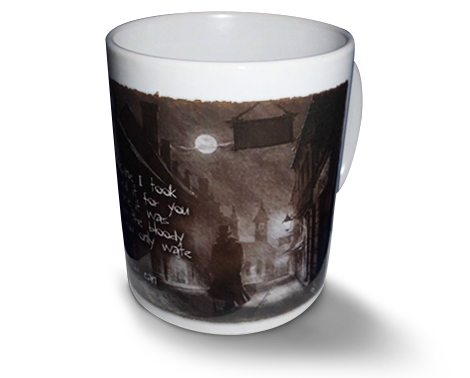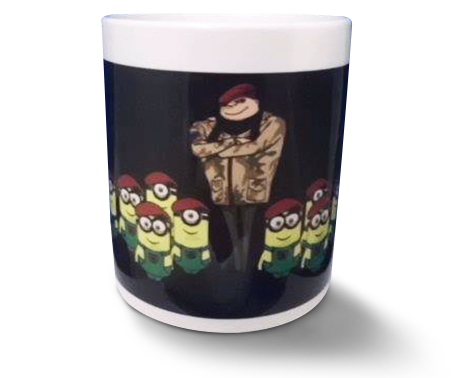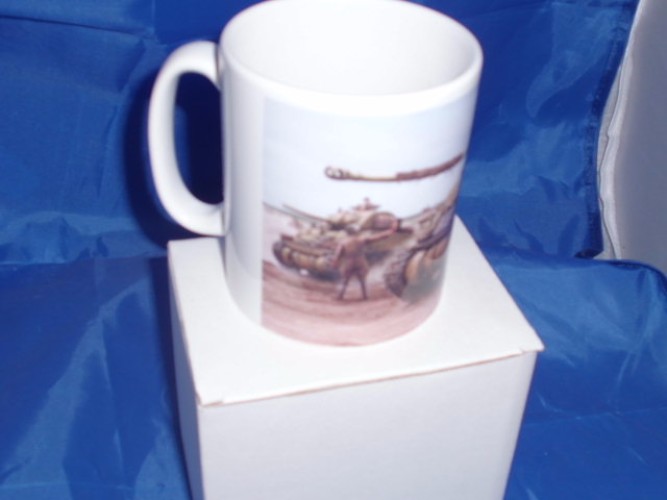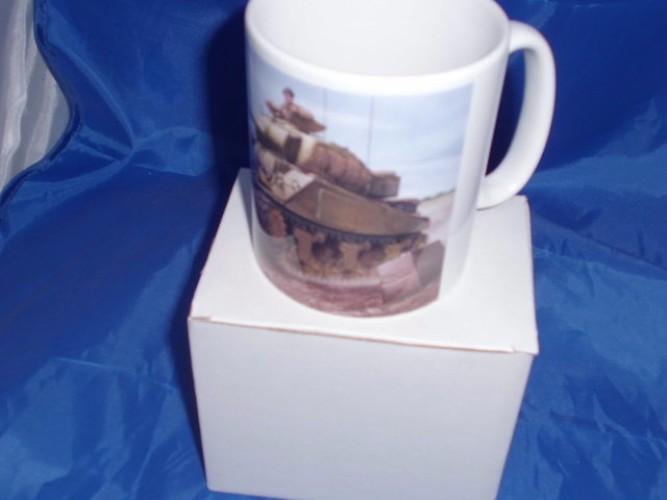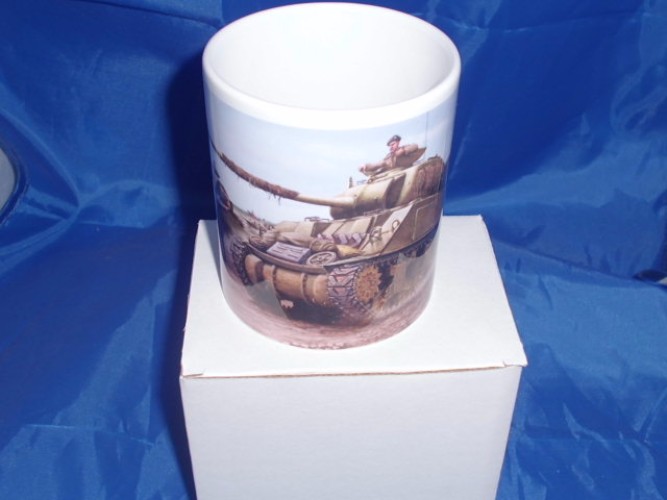Sherman Firefly Mug
11oz dishwasher safe
The idea of putting the 17 Pounder (76.2 mm/3 in) on a Sherman was long opposed by the Ministry of Supply. It finally happened largely due to the efforts and perseverance of two officers, British Major George Brighty, with the help of Lieutenant Colonel Witheridge, an experienced veteran of the North African campaign and wounded at Gazala. Despite reports and refusals, they managed to pursue the project by themselves and eventually get the concept accepted. Massive delays also began to appear in the development of the official projects which were meant to mount the new gun. Brighty had already made attempts of the conversion at the Lulworth Armoured Fighting School in early 1943. This first version had the whole recoil system removed, locking in effect the gun in place, while the tank bluntly absorbed the recoil. Witheridge joined Brighty due to the doubts of the Challenger being ready in time and lobbied actively for the same idea, providing his assistance and solving the recoil problem.
They received a note from the Department of Tank Design to cease their efforts. However, thanks to Witheridge’s connections, they eventually convinced the head of the Royal Armoured Corps. They then won over the Director General of Weapon and Instrument Production, and the Ministry of Supply, who ultimately gave them full support, funding, and an official approval. In October-November 1943 already, enthusiasm and knowledge about the project grew. In early 1944, before the new delays of the Challenger and inability of the Cromwell turret ring to receive the 17 pdr became known, the programme was eventually given the ‘highest priority’ by Winston Churchill himself in preparation for D-Day.
The Firefly was ready in numbers and filled the 21st Army Group’s Armored Brigades in 1944, just in time for D-Day. This was fortunate because Allied intelligence did not anticipate the presence of enemy tanks, of which the numerous Panthers were formidable adversaries for the Sherman. Ken Tout summed up his impressions about the Firefly, then at the 1st Northamptonshire Yeomanry: “The Firefly tank is an ordinary Sherman but, in order to accommodate the immense breach of the 17-pounder and to store its massive shells, the co-driver has been eliminated and his little den has been used as storage space. … The flash is so brilliant that both gunner and commander need to blink at the moment of firing. Otherwise they will be blinded for so long that they will not see the shot hit the target. The muzzle flash spurts out so much flame that, after a shot or two, the hedge or undergrowth in front of the tank is likely to start burning. When moving, the gun’s overlap in front or, if traversed, to the side is so long that driver, gunner and commander have to be constantly alert to avoid wrapping the barrel around some apparently distant tree, defenceless lamp-post or inoffensive house”
Fortunately, the Firefly was also present. The British and Commonwealth units had to face over 70% of all German armor deployed during the Battle of Normandy, including the much-feared SS Panzer units, in particular around Caen. In turn, the Germans learnt to recognise and respect the Firefly, which often became their #1 priority target in most engagements. Such was the damage they inflicted. In response, the crews usually painted the protruding half of the barrel with an effective countershading pattern to try to disguise it as a regular Sherman. A common tactic was to place the Fireflies in good hull-down positions in support of other Shermans, covering them in the advance each time an enemy tank would reveal itself, at least in theory.
Their effectiveness rapidly became legendary, as testified by the most enviable hunting scores of all Allied tanks. On 9 June 1944, Lt. G. K. Henry’s Firefly knocked-out five Panthers from the 12th SS Panzer Division in rapid succession during the defense of Norrey-en-Bessin. Other Shermans were credited with two more, out of a total of 12, successfully repelling the attack. On June 14, Sgt. Harris of the 4th/7th Dragoon Guards destroyed five Panthers around the hamlet of Lingèvres, near Tilly-sur-Seulles, changing position in between. Even the most feared German top ace tank commander, Michael Wittman, was presumably killed by a Canadian Firefly. This famous action was credited to Ekins, the gunner of Sergeant Gordon’s Sherman Firefly from the Sherbrooke Fusiliers Regiment, A-Sqn. He destroyed three Tigers in a row, one of which was presumably that of Michael Wittman, near Cintheaux, in August 1944.
In total, the 1900+ Fireflies were used by the 4th, 8th, 27th, 33rd Armored Brigades, the Guards Armoured Division and the 7th and 11th Armoured Division in Normandy and north-western Europe, including the Netherlands and Northwestern Germany. In Italy, it was deployed with the British 1st and 6th Armoured Divisions. The Canadians had Fireflies with the 1st (Italy) and 2nd Brigades and in the 4th and 5th Canadian Armoured Divisions, mostly in north-west Europe in 1945. The 1st Czechoslovak Armoured Brigade operated 36 Firefly 1Cs during the siege of Dunkirk in 1944. The 4th New Zealand Armoured Brigade had some during the Italian campaign, as did the Polish 1st Armoured Division (NW Europe) and 2nd Armoured Brigade (Italy), and the 6th South African Armoured Division in Italy. After the war, Fireflies were still used by Italy, Lebanon (until the 1980s), Argentina, Belgium and the Netherlands (until the late 1950s).

